Salmon/Sargo Class
Design and Construction Notes
The first six boats were authorized in Fiscal Year 1936 appropriations (the Salmon group), with construction of three going to EB, two to Portsmouth, and one to Mare Island. Six more boats of the class were authorized in FY-37 (the Sargo group) with the same spread of construction yards. Four more boats were authorized in FY-38 (the Seadragon group). They were split evenly between EB and Portsmouth. All 16 boats had the same performance specifications and armament, and were very similar in external appearance. They will all be considered to be one class here on PigBoats.COM. The Government owned Navy yards, with labor and procedural issues now in the past, had fully adopted welding as the primary joinery method. All 16 boats of this class, Electric Boat and Government design, were of fully welded construction, as were all subsequent submarines.
The Navy had encountered some problems with the all-electric drive on the Porpoise class. Serious issues with flashover on the main motors while under load, and the loss of 360 horsepower in transmission through the electrical system temporarily soured the Navy on all-electric drive. Accordingly, the first 12 boats of the Salmon/Sargo class had a new "composite" drive arrangement where two engines were connected to the propeller shafts and two drove only generators. While successful, the composite drive arrangement was cramped, complicated, and difficult to maintain. The four Seadragons reverted to all-electric drive, the issues that the force had experienced with the Porpoises having been largely corrected by that time.
In an effort to increase torpedo loadout, all of the Salmon/Sargo class submarines had four non firing torpedo stowage tubes inside the superstructure, stacked two-a-piece vertically on each side of the conning tower. To access the tubes, deck hatches were removed, the sub's two liberty launches were pulled out and placed in the water, and the weapons were extracted from the stowage tubes one at a time. They were winched up to the main deck and then lowered down into the torpedo room in the standard manner. The total evolution under good conditions would take a minimum of two hours. In peacetime this was acceptable, in war it was a tremendous liability so the tubes were removed during wartime overhauls.
Due to a defect in the main induction valve operating system, Squalus (SS-192) sank while on trials near the Isle of Shoals off the coast of New Hampshire. The after part of the boat flooded during a test dive and 26 men lost their lives. The remaining 33 men were rescued in the very first operational use of the McCann Rescue Chamber. Squalus was salvaged, returned to Portsmouth, and repaired. Renamed Sailfish but retaining her original hull number, she went on to serve the Navy well, earning a fine war record in WWII.
These boats received extensive modifications and modernizations during the war. Their fairwaters were cut down to lessen the overall silhouette, and they received additional or upgraded gun armament, radar, and other improvements. During an overhaul in 1942 Stingray received two additional external forward firing torpedo tubes in the superstructure just below the main deck forward of the bow planes. This was a belated attempt at increasing firepower, but the experiment was not successful and the tubes were removed in a later overhaul.
These boats were in the thick of the fight against the Japanese from the very first day of the war. Four of them (marked by an asterisk) and their brave crews were lost in action and are considered to be "on eternal patrol".
Note... many early photos of these boats will show them with large "S" identifiers painted on their bows and fairwaters. These were used to identify the boats visually while on the surface. The identifiers were NOT their names or designations. The use of these identifiers was common on the fleet boats, but faded out in favor of hull numbers in 1938 because their use became confusing.
While generally very similar in external appearance, there were a lot of variations in these boats over the years, especially once WWII started. For a thorough explanation of these changes, please take a few minutes to read the Visual Guide article at this link.Salmon (SS-182)
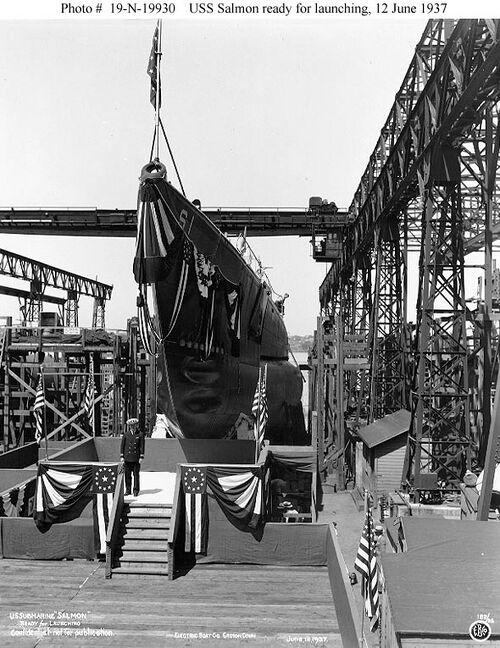
Seal (SS-183)
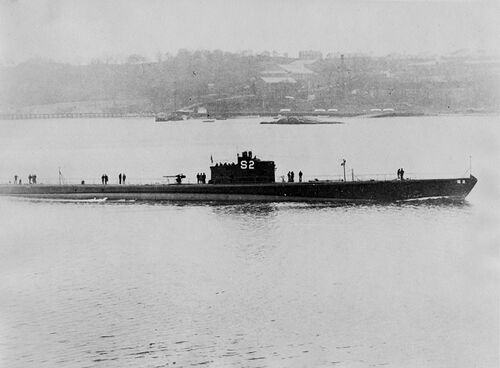
Skipjack (SS-184)
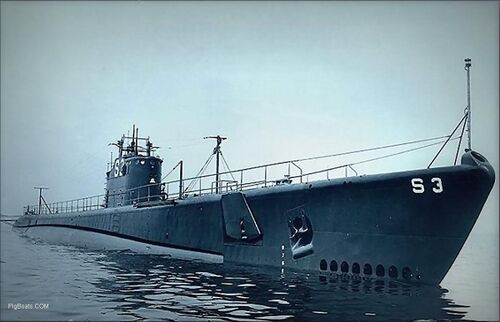
Snapper (SS-185)

Stingray (SS-186)
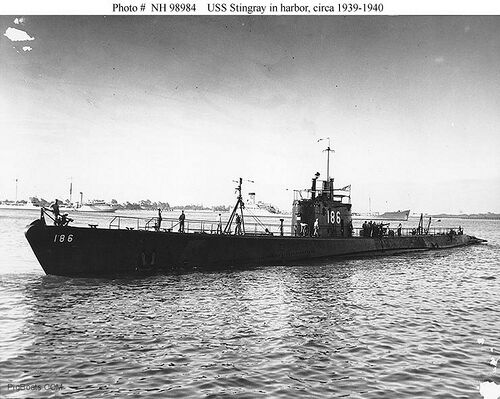
Sturgeon (SS-187)
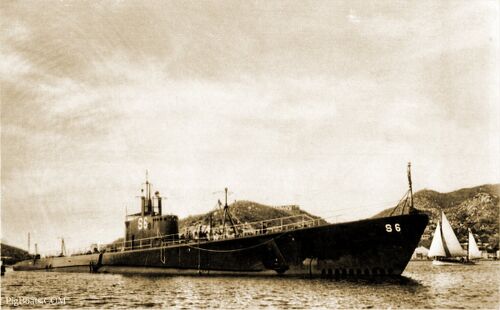
In this photo she is still wearing her class identifier letter/number (S6) on her bow and fairwater. This somewhat confusing system of identifying the boat at a distance was discontinued in early 1939. After that all boats prominently displayed their hull number instead.
These boats had a folding accommodation ladder that retracted into the superstructure, similar to what the V-boats had. They were located on either side (just aft) of the fairwater. The starboard side ladder can be seen rigged out here. These ladders greatly aided in getting the crew into liberty launches so that they could go ashore. This is the first time that we have ever seen a boat other than the V's with this ladder rigged out. We actually didn't realize that the Porpoise and Salmon/Sargo classes even had them until we saw this photo. Photos of the ladders rigged out are very rare. The ladders would only have been used when the boat was anchored out and would not have been used alongside the pier or the tender. Opportunities to anchor out would have been limited as it was always preferable to pull alongside a pier. The fact that we see these ladders rigged out on the V-boats can be attributed to the fact that in the 20's and early 30's those boats made more "show the flag" visits to unprepared ports and thus used their liberty launches more.
You can see her anchor chain running out of the anchor housing just aft of the 10 limber holes in the bow just above the waterline. Also, hanging from the starboard yardarm on the radio mast is a black ball that is the international signal for a vessel that is at anchor. Anchoring out accounts for the lifting boom attached to the fore deck mast that would have lifted the ship's boat from its storage under the deck and place it into the water. This boat would have then utilized the accommodation ladder that is talked about above. The ladder would have also been used by any officials and dignitaries from the city that were visiting the submarine. This boom was also utilized for loading torpedoes.
A yacht with a yawl rig is sailing in the back off Sturgeon's bow. A Mexican flag is flying from the head of her mizzen mast. The presence of the bumkin (boomkin) on the vessel stern, for handling that masts boom sheets, lends strongly to this being a yawl rig.
Sargo (SS-188)
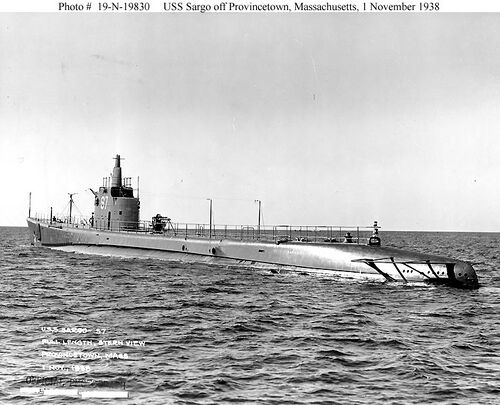
Saury (SS-189)

Spearfish (SS-190)
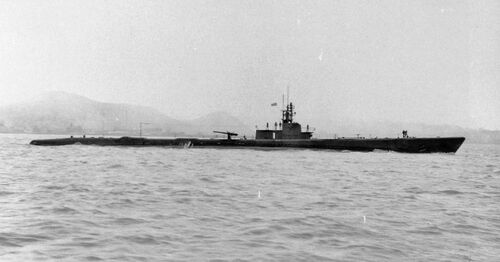
Sculpin (SS-191)*
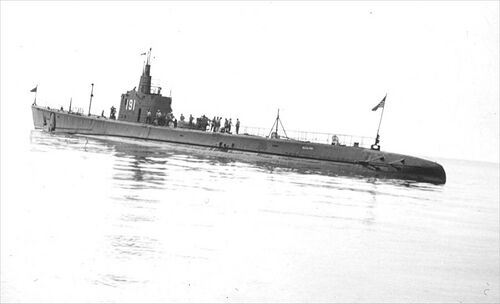
Squalus (SS-192)

The scaffolding hanging from the main deck above the anchor was a work platform around the swing-out mine cable cutters. There was one cutter on each side of the boat, and they retracted into the superstructure, hidden behind curved doors. Pictures of the cutters rigged out are extremely rare, even something like this is rarely seen.
Sailfish (SS-192)
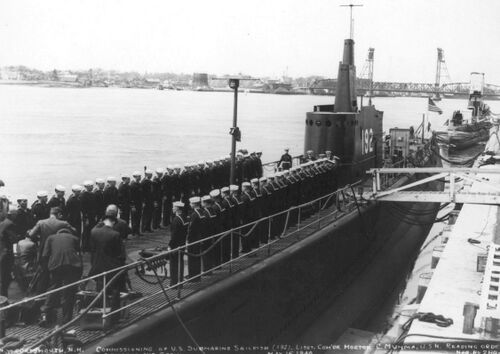
Moored to the pier behind her is the Tambor-class submarine Triton (SS-201). She had been launched six weeks prior.
Swordfish (SS-193)*

Note that Swordfish does not have the class identifiers on the hull, only the hull number. She was the first boat launched under the new ID scheme.
Seadragon (SS-194)
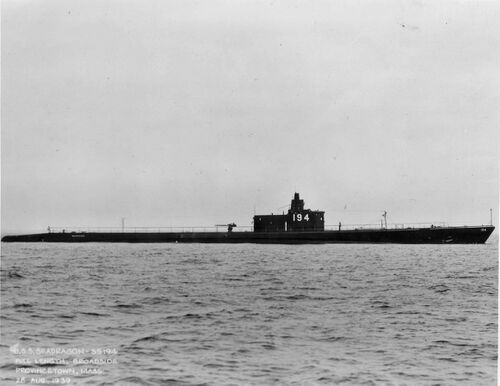
Sealion (SS-195)*

Searaven (SS-196)
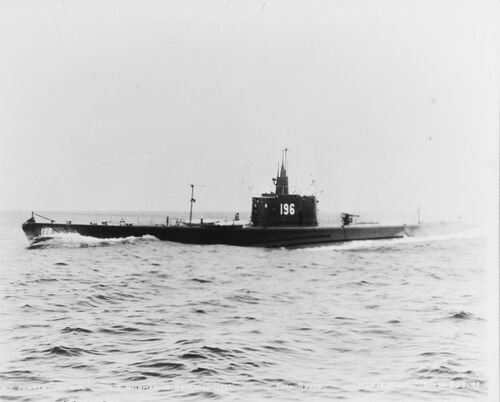
Seawolf (SS-197)*

General Salmon/Sargo-class and Group Photos
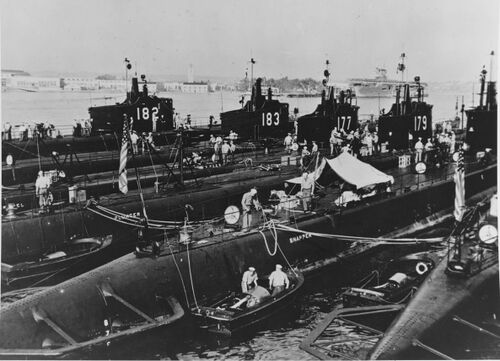
In the background is Naval Air Station North Island, the birthplace of Naval Aviation. Moored to the pier is the legendary aircraft carrier USS Enterprise (CV-6).
See more General Salmon/Sargo-class photos
Page created by:
Ric Hedman & David Johnston
1999 - 2023 - PigBoats.COM©
Mountlake Terrace, WA, Norfolk, VA
webmaster at pigboats dot com
